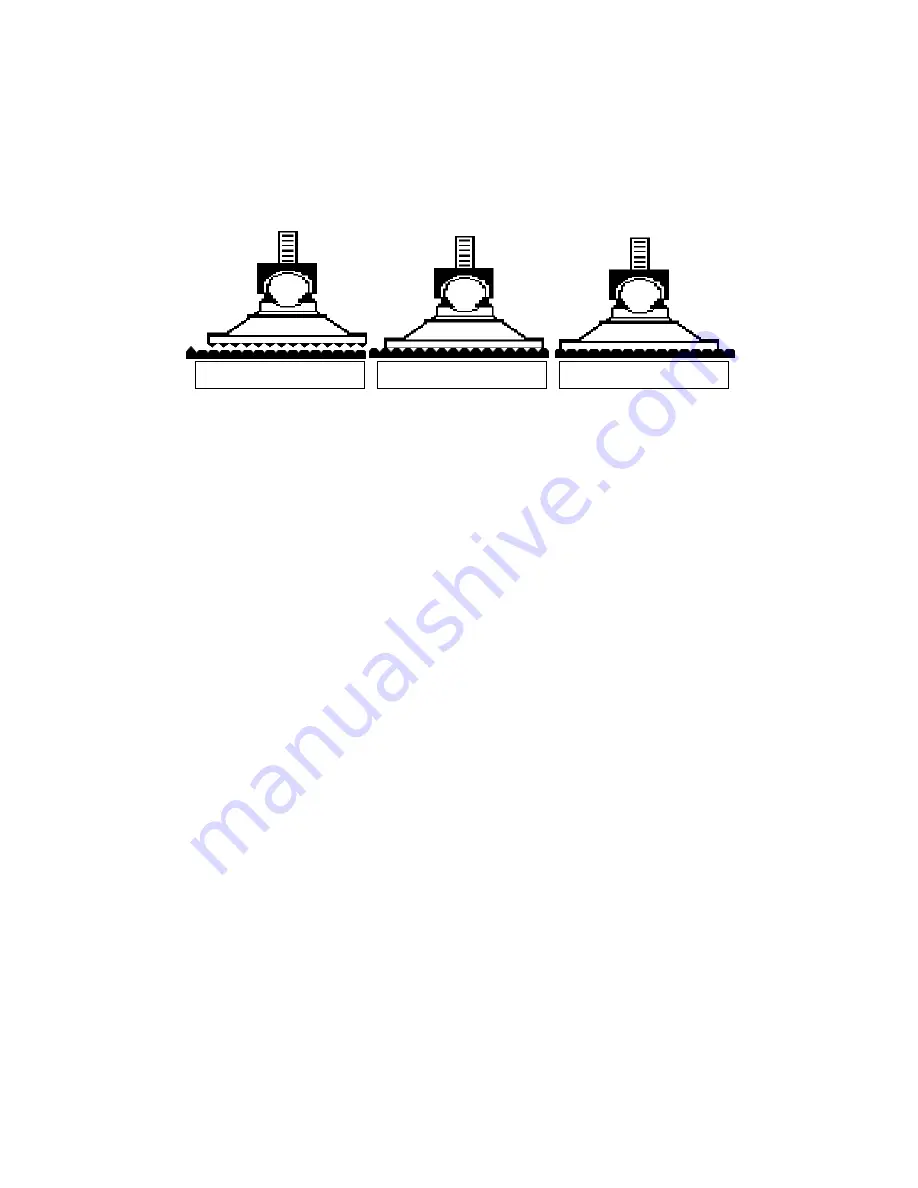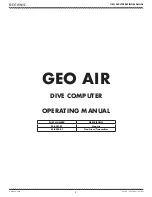
C
HAPTER
9
-
BIAS
9-2
dirty surface. When the foot is placed down and a reading is taken, the sandpaper grains do not
necessarily mesh perfectly with the surface texture imperfections on the pavement. When the
Dipstick is pivoted around this foot, the grains in the sandpaper tend to mesh better with the
imperfections on the pavement. The result is that the Dipstick’s rear foot is being “screwed into
the ground”, and the Dipstick always seems to be climbing uphill a very small amount.
How much are we talking about?
A grain of sand is 5-15 thousandths of an inch thick. A human hair is more than a thousandth of
an inch thick. The total Bias that we are talking about is typically 0.001" (0.0254 mm) to about
0.003" (0.0762 mm) Some people might say that worrying about this degree of precision is
overkill. But remember, this is a constant (fixed) error, so it accumulates as more and more data
are collected. If you have a Bias of 0.003" (0.0762 mm), then after 10 steps, the elevations will be
off by 10 X 0.003" = 0.03" (0.762 mm) If you collect 100 steps of data, the elevations will be off
by 100 X 0.003" = 0.3" (7.62 mm). On very long Runs, the total Bias can add up to the point
where it makes a significant difference in the elevations of a Run. Once again, this makes no
difference whatsoever in the IRI.
Visualizing Data Collection Bias:
Here’s an easy way to visualize how Data Collection Bias works. Imagine collecting data with a
Dipstick on a beach volleyball court that has been raked smooth. The surface you will be walking
on is clean dry sand, and the dry sand layer is quite thick.
When you first set the Dipstick down, it will sink into the dry beach sand a little at both ends.
Let’s say it sinks down into the dry sand 0.25 inch. (6mm) The Dipstick is balanced, so it will
sink 0.25 inch at both ends. You start the Run and need to turn the Dipstick to get the next
reading.
When you turn the Dipstick, you need to push the handle forward a little, so the back foot will
come off the ground. The instant that you do this, the front foot will sink deeper into the sand,
because now ALL the weight of the Dipstick is on the front end. Maybe it will sink another
1/8 inch, (3mm) so now the front foot is 3/8 inch below the top surface of the sand.
As you turn the Dipstick, you are effectively “screwing the Dipstick into the ground, so the
foot you are swiveling around will sink even more into the sand.
When you have finished turning the Dipstick and set the new front end down, it will sink into
the sand – but only a little. Can you see that the end of the Dipstick that is in front will be
higher than the end of the Dipstick that is in the back? The Dipstick will be tilted “uphill”.
When you turn the Dipstick again to collect a new reading, the same thing will happen
again. Every time you turn the Dipstick and set it down to collect a reading, the front end
will be higher than the rear end. Because it is always tilted “uphill,” the Dipstick will
Pads fully meshed w/texture
Partial Meshing
Initial Contact
Summary of Contents for Dipstick 2200 Series
Page 2: ...This page is intentionally blank...
Page 7: ...DIPSTICK 2277 PARTS LIST v The Dipstick 2277 Case Behind the Top Foam Lid...
Page 10: ...This page is intentionally blank...
Page 24: ...This page is intentionally blank...
Page 42: ...This page is intentionally blank...
Page 60: ...This page is intentionally blank...
Page 68: ...This page is intentionally blank...
Page 80: ...This page is intentionally blank...
Page 86: ...This page is intentionally blank...
















































